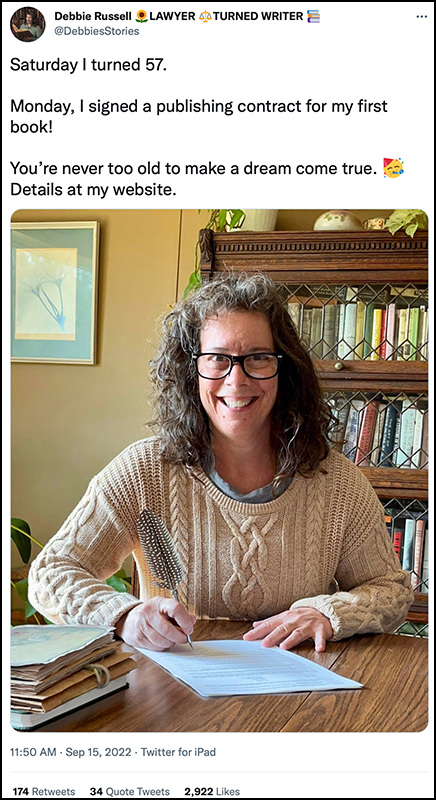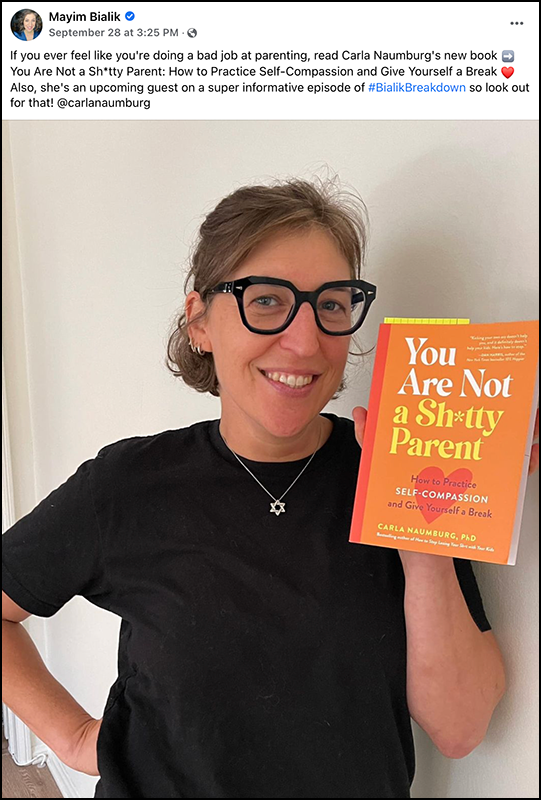As a writer or creator, I’m sure you have read that you should connect directly with your potential readers on social media, a newsletter, and elsewhere online. And when you ask “Um, what exactly do I share? How — specifically — do I do this?” You may have heard the advice of:
“Just be authentic!”
But that isn’t as easy as it sounds. So today I want to talk about what it means to share your work, how “authenticity” works, when it becomes ridiculously complicated, and how you can approach all of this as a craft that feels safe and meaningful. You know, one where you slowly learn and build, instead of feeling like you are flopping around, a fish out of water.
I want to present this in two ways, the first is how I think people intend “authenticity” to feel, which is this: that it is deeply true. That it resonates in your bones. That you are sharing what matters, whether that it a moment of total excitement, or an experience of deep truth. The idea of “being authentic” in how you share online is supposed to mean, “Don’t be a fake poser,” which I have to imagine resonates with most people.
But, I kinda fear that the encouragement to be “authentic” online also makes people feel, well… bad. That it creates an expectation that they every day they can conjure up something “authentic” via a status update, photo, or video, that feels right and others love. Where this gets complicated is when you share something that feels authentic, only to hear crickets. No one comments, no one clicks “like,” no one shares it, no one validates you. This can effect someone’s mental health in a negative way. They may think:
“Well, I shared myself and no one cared.” Or simply: “Me being authentic is me not knowing what to share.”
Knowing how to communicate what we care most about is not easy. I mean, in college I majored in Communications. Even at the time, it felt a little odd because all around me, everywhere I went, people were communicating. So on the surface, how to communicate isn’t a mystery. But of course, there are layers to how we communicate well. For sharing your creative work, I think this can also get wrapped up on our own sense of identity too.
For instance, we can dream that “being authentic” is wearing an amazing outfit, on a great hair day, sitting in a trendy cafe in a cool city, writing a book next to other people who are awesome and creative. Oh, and eating a delicious brownie.
But the reality of “being authentic” is often the opposite: sitting on an old chair in a room by oneself, in sweatpants that are fraying at the bottom, watching a YouTube video on their phone of someone renovating a kitchen. Oh, and eating Cheez-Its.
This idea of “just be authentic” can also make someone feel like it’s easy for everyone else. They can look at others sharing on social media, and it just looks so wonderful and effortless. So in that moment, the idea of “just be authentic!” can often feel like, “Well, I want to be authentic, but a certain kind of authentic. Not THIS KIND of authentic. Not the kind where my home is a mess. I feel like I look horrible. Where the lighting is bad.”
The conversation around “Just be authentic” that feels like it is missing is that of mental health. Our complicated relationship with self-esteem, with wondering who we even are, what we are projecting , who it is for, how it relates to our goals, of wanting to both stand out yet also fit in, and just this pervasive feeling of: “am I doing this right?”
Maybe none of this resonates with you. Maybe some of it does, but you have your own spin on it. I spend my days working with writers and talking to creators, and this stuff comes up constantly. So what do I recommend to help you feel a path to sharing with authenticity, but avoiding the downward spiral of second guessing and feeling bad about it? Some ideas:
- Be clear about the topics and themes you want to be known for. Think of it like this: “what topics am I endlessly curious about?” Or: “What topics do I love exploring?” Know your messaging inside and out as a way to give yourself permission to go deep and share frequently.
- Focus on sharing a moment, not a thing. Just share something that gives you joy, gives you pause, or you want to share because it felt interesting
- Connecting with one person should be the goal. Don’t try to speak to “an audience.” Because that can be terrifying to feel you are pleasing everyone.
- Ask questions. Simple questions that make people feel a part of, or connected to what you are sharing. I mean, just look at this question that author Sara Petersen shared with her followers the other day: “What are some of the most infuriating things people have said to you re: motherhood?” The response? 677 replies and 125 people resharing it to others.
- Define ways that feel safe for you to feel seen. For example, look at my Instagram feed. You see one corner of my studio, that’s pretty much it. Yet within that corner, I can do a lot!
- Don’t be afraid to hone the craft of how you share. Give yourself time: weeks, months, years to learn how to share in a manner that feels authentic to who you are.
- Show up. Don’t hide. Your voice and your message deserves to be heard.
These actions don’t have to be complicated. They can be sharing a question:

Or Sharing a selfie:

Or recommending a book. Sure, this is celebrity, but I only saw it because a friend shared it, along with the comment: “I. Need. This.” Her other friends quickly commented, “For real me too lol especially lately” and “same.” This is how word-of-mouth-marketing happens.

“Authenticity” in how you share is what you make of it. I want to encourage you to set clear boundaries so that you feel comfortable and safe, but then consider how you share as a craft. The goal is not a vying for a “like” or going viral, but truly connecting a theme or idea with another human being.
Thanks.
-Dan
